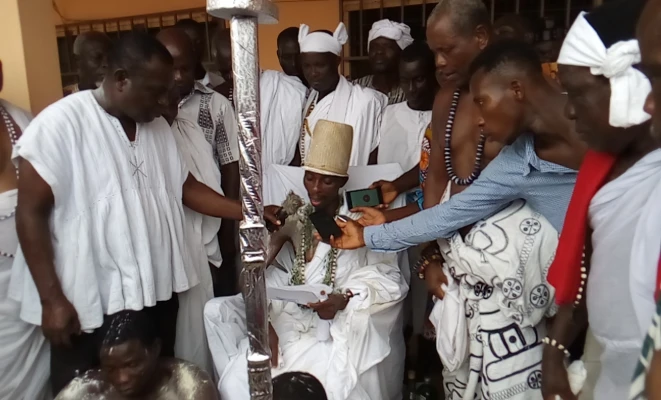Adikanfo Festival: A Historic...
June 25, 2024

Old Ningo, situated in the Greater Accra Region of Ghana, has a rich history deeply rooted in its origins and cultural heritage.
Formerly known as Great Ningo, the town is predominantly inhabited by the Ga-Adangbe people, who have historically thrived as a fishing and farming community.The name "Ningo" is believed to derive from the Ga–Dangme words "nu" meaning water and "ngoo" meaning salt, reflecting the town's geographical and cultural significance.
However, historical accounts suggest an intriguing alternate origin. According to the Encyclopædia Metropolitana published in 1817, voyagers named the area near the second Danish castle, Friedensburg, "Ningo." In Latin, "Ningo" translates to snow, possibly inspired by a distant mountain peak visible to mariners at sea.
This poetic naming choice highlights early European encounters and the blending of local and foreign perspectives in the naming of the town.
European presence in Old Ningo dates back to the establishment of Fort Fredensborg by the Danish in 1734. Initially used as a slave-trading station within Danish Guinea, the fort played a significant role in the transatlantic slave trade until its decline following abolition efforts.
By the mid-19th century, the fort had fallen into disrepair and was eventually taken over by the British in 1850, marking a transition into the colonial era under British rule.
Old Ningo is organized into divisions and clans that play vital roles in local governance and community life. The town's traditional structure includes divisions such as Lower, Lower Kponↄ, Djangmaku, and Kabiawe, each with distinct clans responsible for various leadership positions and cultural roles. These divisions reflect the town's deep-rooted social organization and the importance of community cohesion.
In contemporary times, Old Ningo is recognized for its educational institutions, notably the Ningo High and Technical School. Situated in a serene environment conducive to learning, the school is esteemed within the region for its educational standards and positive impact on local youth development. As a second cycle institution, it plays a pivotal role in shaping the educational landscape of the town and beyond.
Old Ningo's journey from a coastal settlement intertwined with the slave trade to a vibrant community celebrating its cultural heritage underscores its resilience and ongoing evolution. Today, the town stands as a testament to the enduring spirit of the Ga-Adangbe people and their contributions to Ghana's historical and cultural tapestry.
June 25, 2024
January 19, 2024
November 30, 2023
July 9, 2024
July 1, 2024